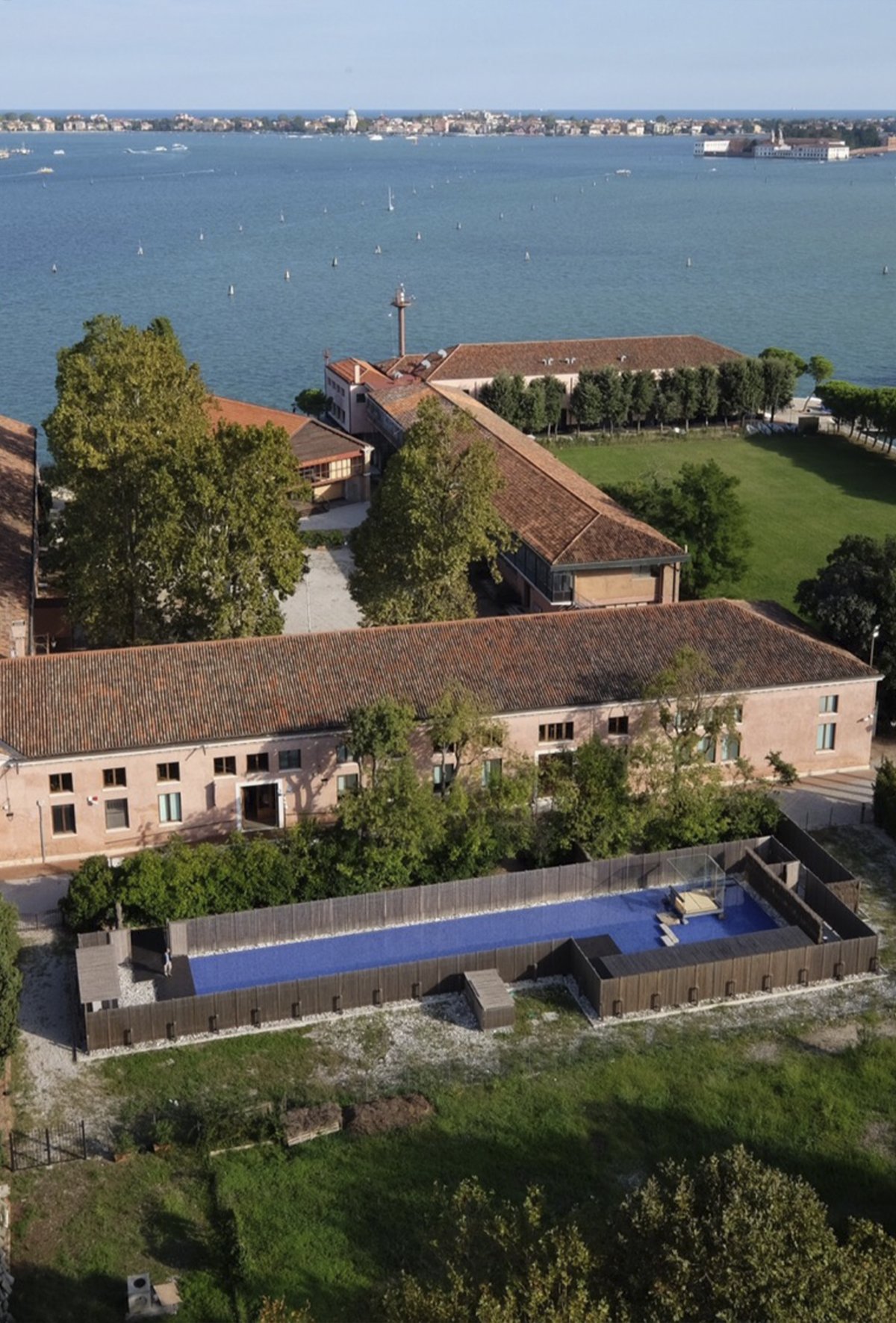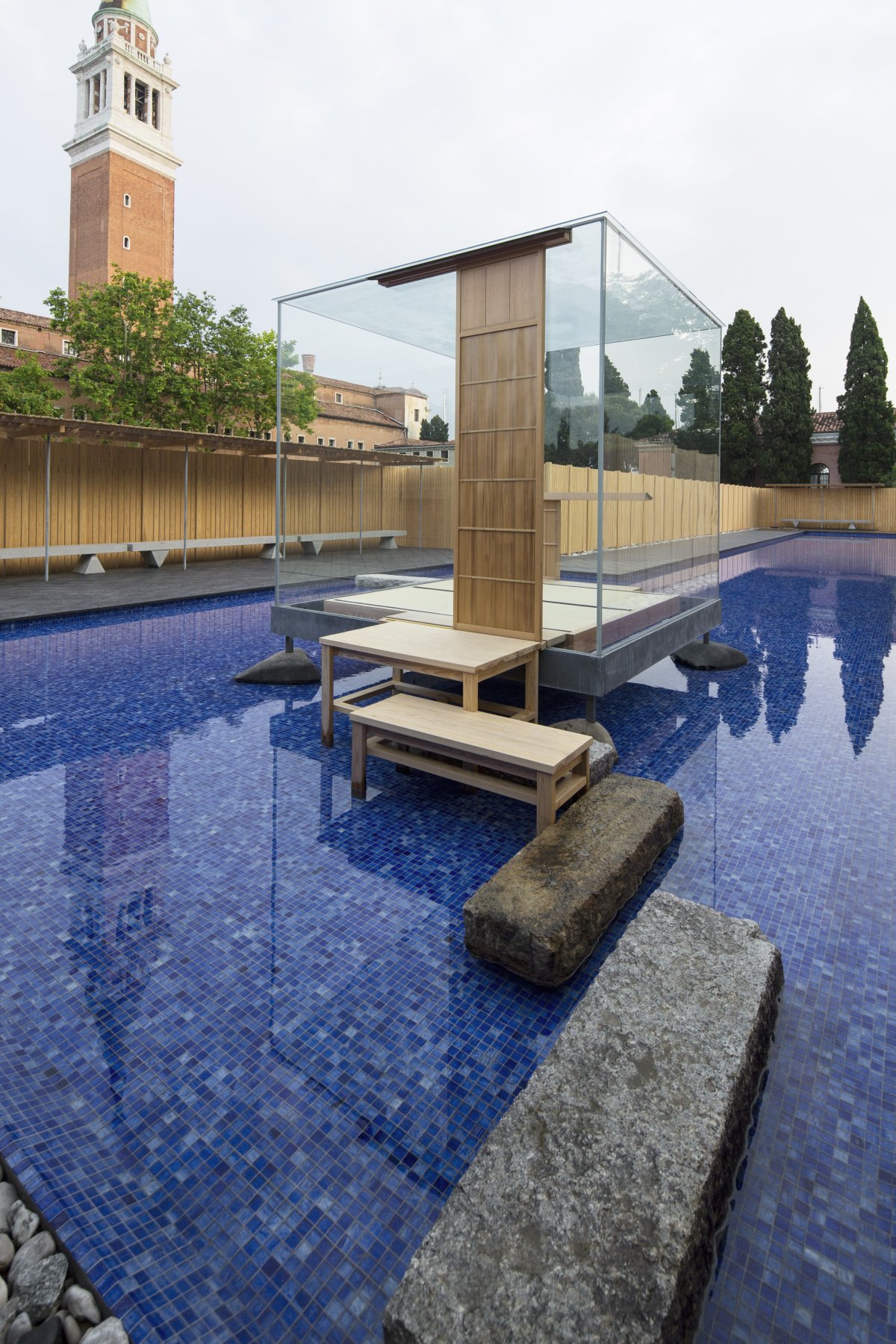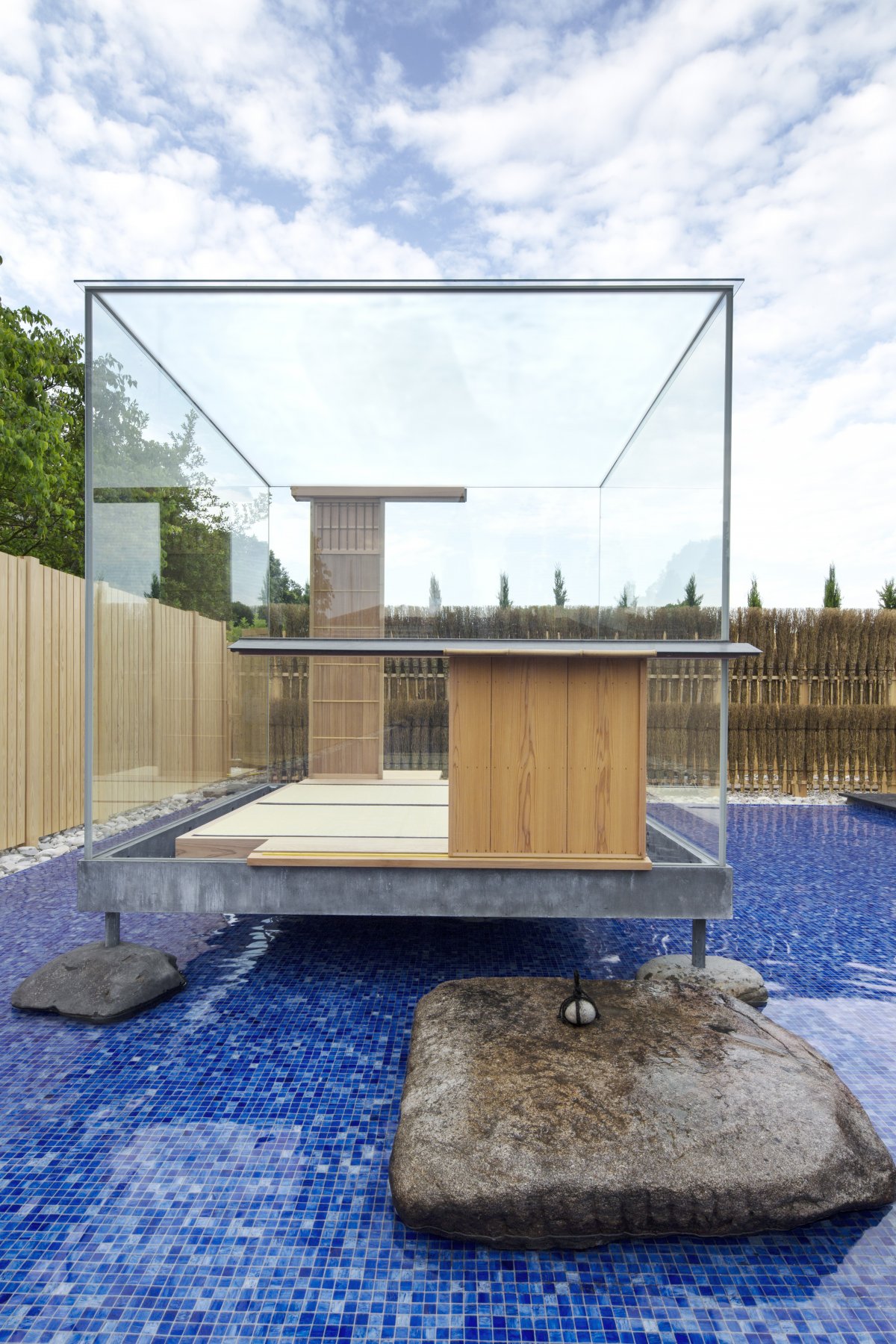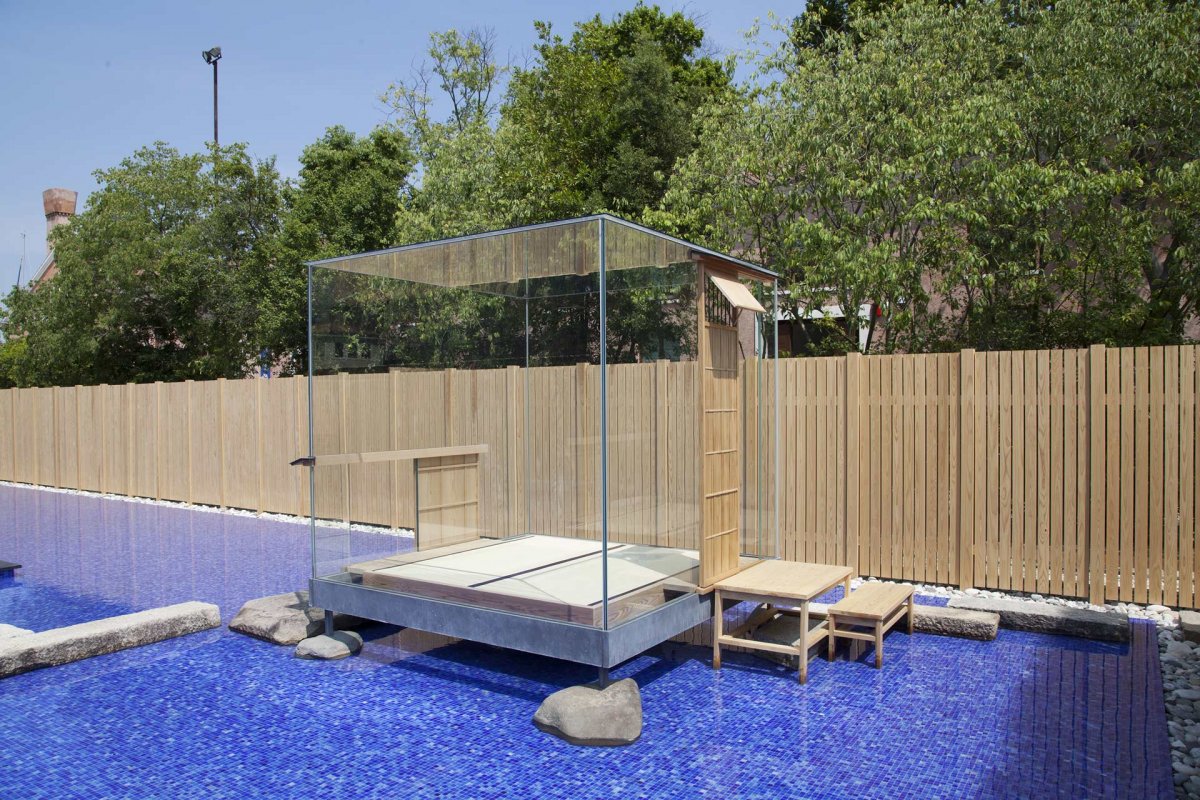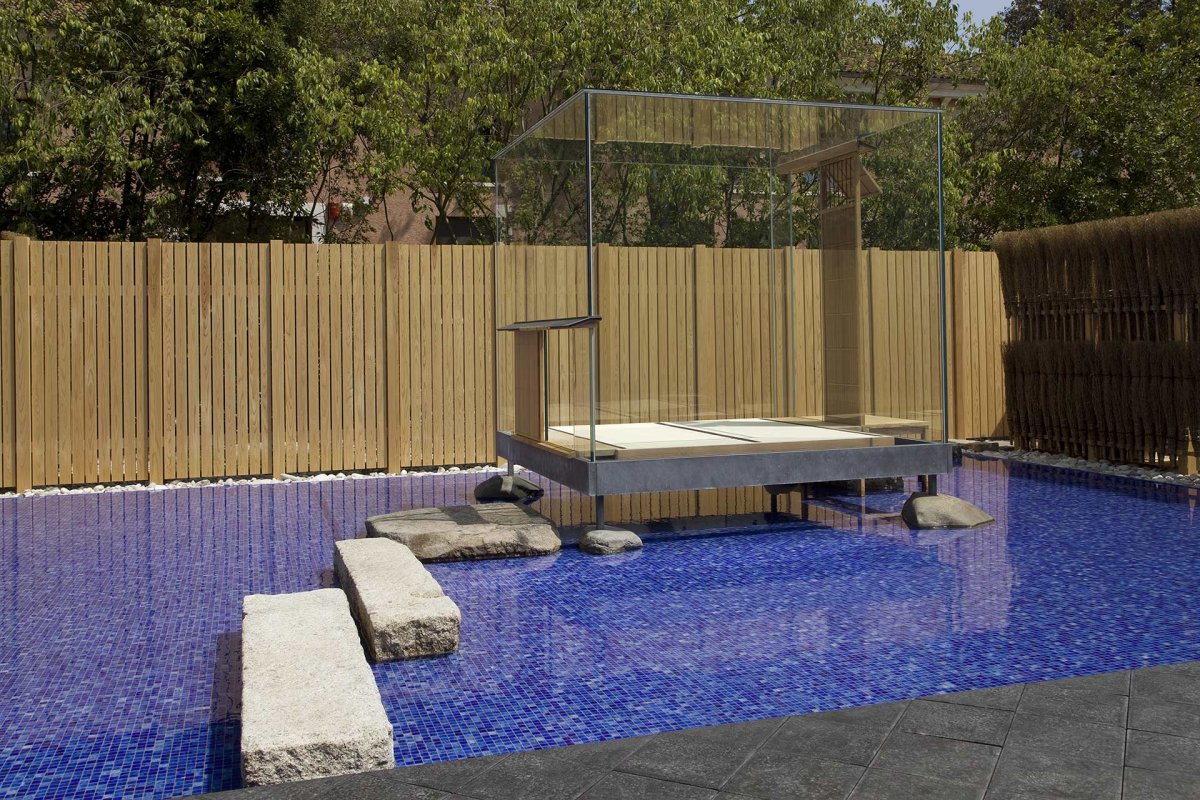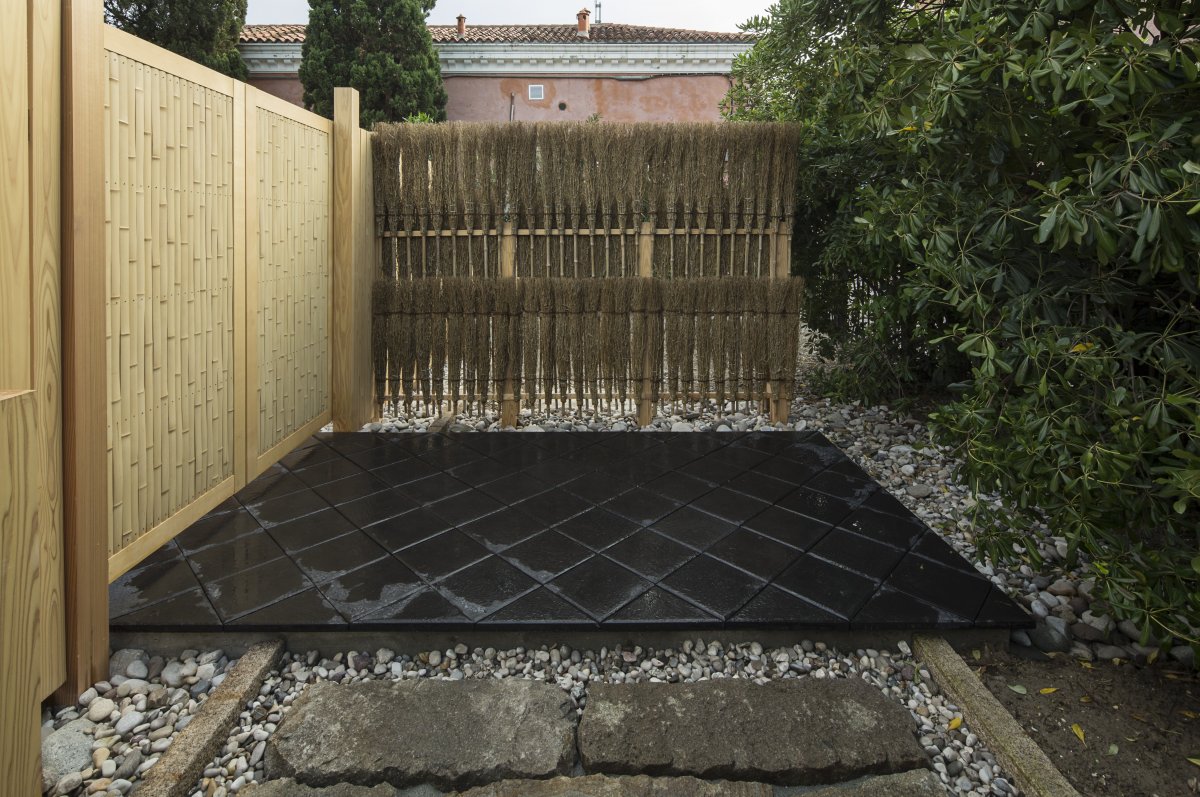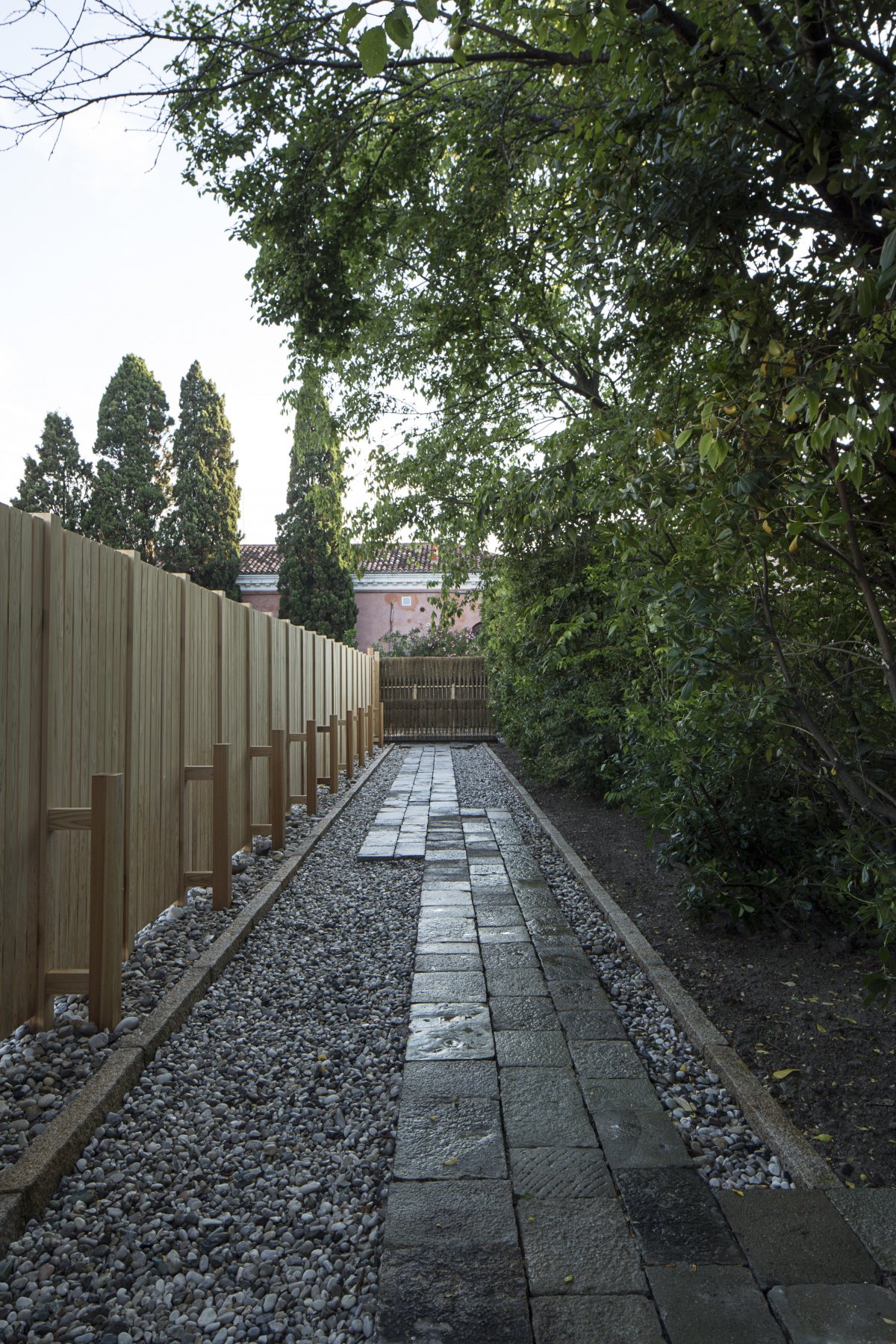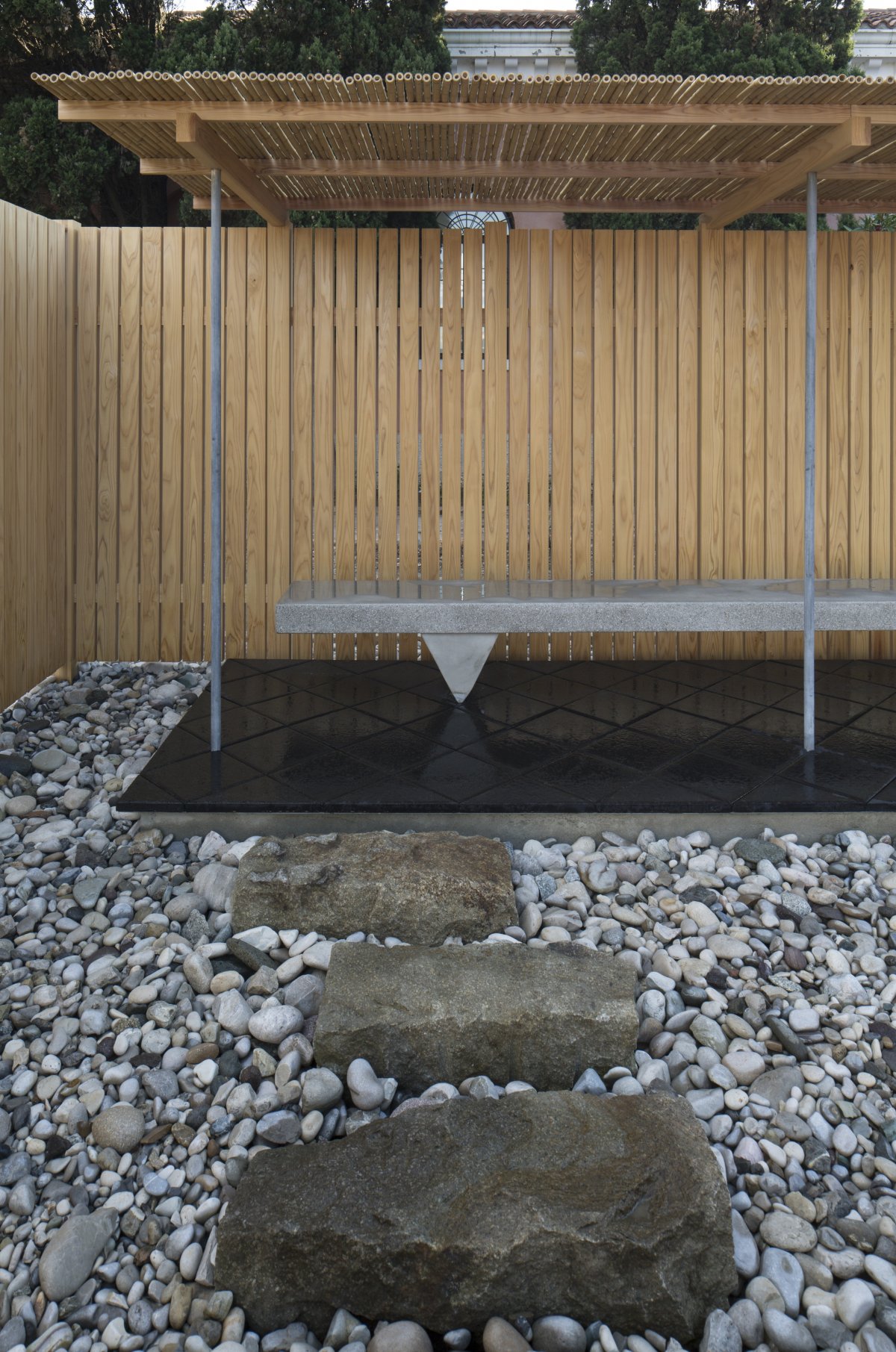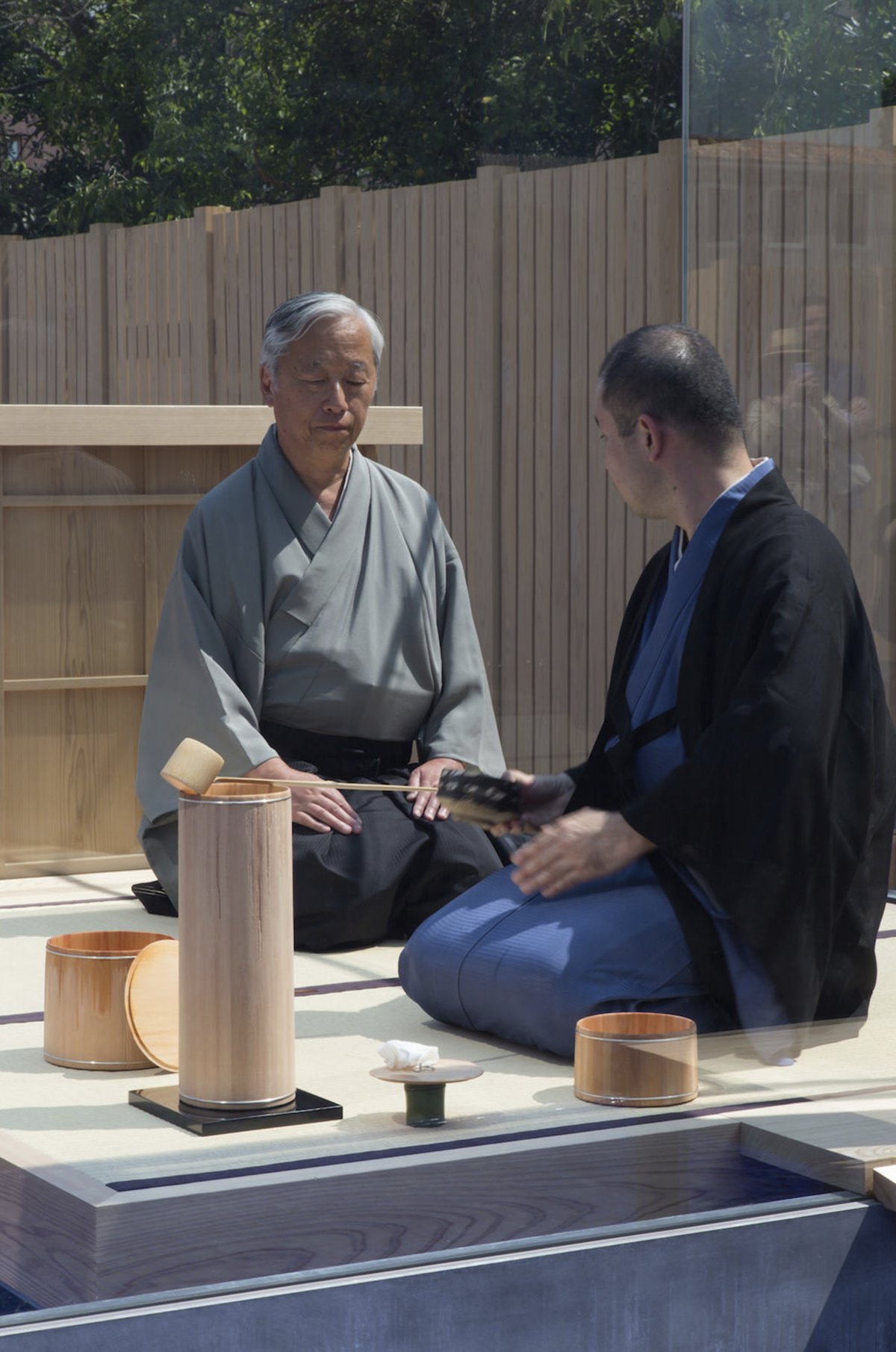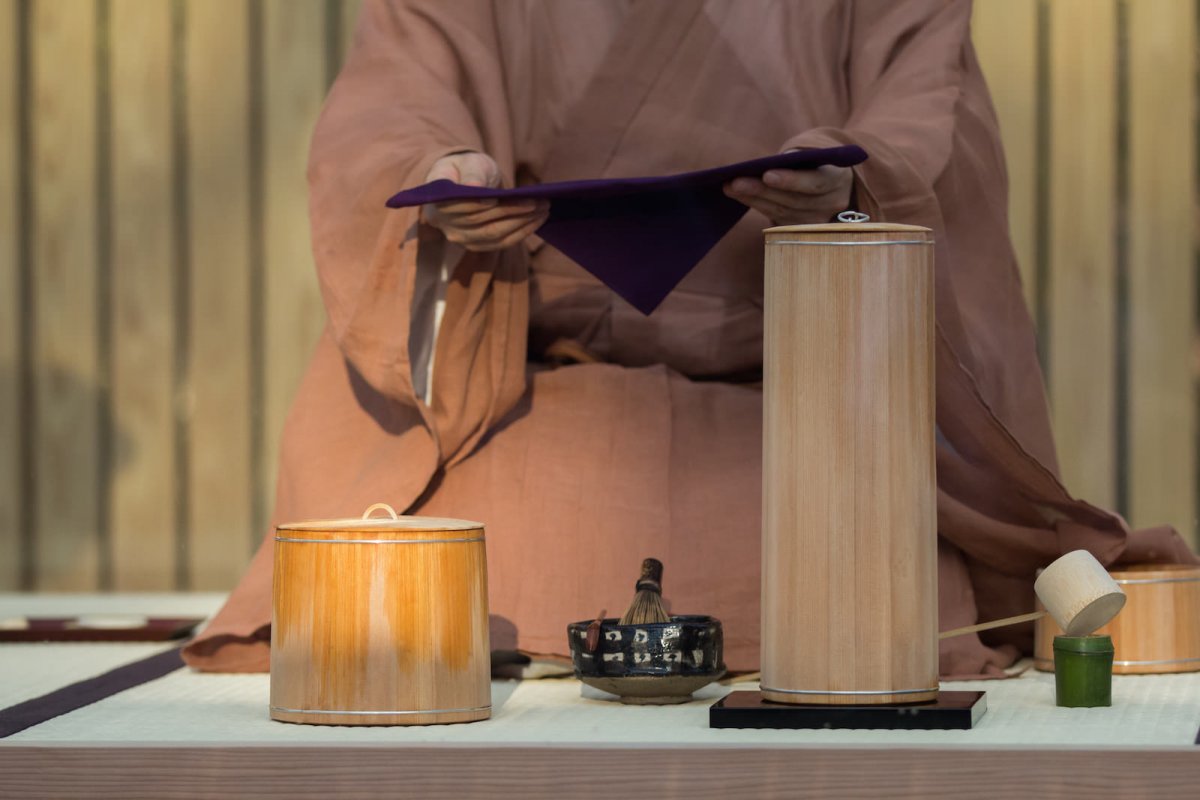
Glass Tea House Mondrian Venice
One of the most prominent “off-site” pavilions Venice Architecture Biennale was designed not by an architect, but a photographer: Hiroshi Sugimoto. Norman Kietzmann visited the tea house he designed and talked to him about art and architecture and his taste in tea.
He is for the commission has designed a glass tea house and its surrounding setting, tucked behind Palladio’s cloister. This was not the first excursion into construction for the 66-year old, currently based in Tokyo and New York. Triggered by his frustration with contemporary museum architecture, over the last six years he has been carrying out architectural projects with the help of three assistants.
Now open, the Glass Tea House Mondrian is a cube, its sides 2.5 metres long, surrounded by a landscape covering 40 by 21.5 metres. Enclosing this is a cedar wood fence constructed without the use of nails by artisans from the Tohoku region, an area particularly hard hit by the 2011 tsunami.
The pavilion itself seems to float above a pool covered in dark blue Bisazza mosaic tiles. According to Sugimoto, the pavilion’s name is supposed to create a bridge between European modernity and Japanese tradition, which even in the 16th century had developed a minimalist aesthetic through the tea ceremony.
- Interiors: New Material Research Laboratory
- Words: Qianqian

